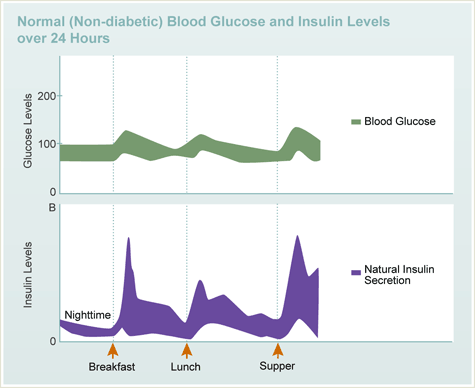So you’ve been on a diet for the past few months, hoping you’ll shed some pounds and get your desired body back. However, eating less can sometimes be challenging to adhere to, especially when your tantalizing hunger keeps tempting you into reaching the leftovers in the fridge. Then you heard about time-restricted eating, or a more common term: intermittent fasting. So, does this fasting for weight loss work? What are the benefits you can get from this new dietary pattern? Read on to find out!
RELATED: Testosterone Therapy May Help Obese Men Lose Weight
Time-restricted Eating Can Boost Weight Loss and Improve Blood Pressure
What is Time-restricted Eating?
Planning Your Meals: Is It Time to Eat Yet?
Time-restricted eating, also known as time-restricted fasting, is a restrictive diet in which you only eat within a specific time window, typically limited to 8 hours per day. You may consume whatever food you like and your regular calorie intake during the eating period. However, as long as you’ve reached the fasting threshold, no more food is allowed. Time-restricted eating is becoming more popular as an alternative to caloric restriction. It’s because it’s easier to implement and adhere to for a longer time. Technically, you only have to “squeeze” all the meals you usually eat in a day into an 8-hour time window. And then the rest is waiting for the health benefits this eating pattern offers you.
Findings Show Benefits of Time-restricted Eating
Recent findings show that time-restricted eating may help people lose weight more effectively. In addition, this dietary pattern also plays a role in lowering blood pressure. For this reason, time-restricted eating is a possible treatment for obesity and hypertension. These roles of time-restricted eating were observed in a clinical trial published by JAMA Internal Medicine, in which scientists found people who practiced time-restricted eating saw multiple improvements in their metabolic health.
How Does Time-restricted Eating Work?
Time-restricted Eating Is All About When Not How Much

As mentioned above, the premise of time-restricted eating is to limit the time you consume food. Therefore, this “restrictive” diet doesn’t restrict the amount or type of food you include in your meals. However, the ultimate goal of any dietary pattern is to promote weight loss by reducing food intake. On this account, people who implement time-restricted eating tend to reduce their calorie intake by cutting off their food portions. But don’t worry if you keep the same calories as you did before. Whether it’s 2,000 or 2,500 calories per day, it will count as time-restricted eating as long as you don’t “munch” all day. RELATED: Counting Calories Vs. Macros: Which is More Effective?
Time-restricted Eating Allows the Body to “Reset”
After a meal, our body “turns on” the digestive system, getting ready to metabolize the food into the resources we can use. The glucose levels in our blood then increase. It’s because the carbohydrate in food is metabolized into glucose as the primary energy source for the body. Having high glucose levels in the body is essentially good, as the body is “packed” with abundant energy for any body functions. Nevertheless, elevated glucose levels for a long time may harm the body, as insulin levels may “spike.”
Time-restricted Eating Keeps Insulin From “Spiking”
Insulin is a hormone secreted by our pancreas. Together with glucagon, this metabolic hormone “governs” glucose metabolism by keeping glucose in a “sweet” range (60-100 mg/dL between meals and 140 mg/dL after meals). However, eating constantly, typically seen in those having a binge eating habit, causes insulin to be secreted without a break. Spiking insulin is bad because too much insulin over a long time may lead to the inability to use this hormone efficiently. Eventually, the body ends up suffering from insulin resistance, a common symptom of diabetes. Therefore, time-restricted eating “resets” glucose levels, preventing insulin from elevating day and night. Because glucose and insulin levels fluctuate after a meal, prolonging the interval between the last meal in a day and the next one allows these two parameters to subside, making the body use insulin more efficiently the next time we eat. 
SOURCE: Insulin Basics.
RELATED: Is Diabetes an Autoimmune Disease? And What Are Possible Treatment Options?
How to Implement Time-restricted Eating
There are many variations of time-restricted eating that anyone can follow. Each variation is characterized by how you allocate the eating and fasting time. The two most well-known methods are the 16:8 and 20:4 diets.
The 16:8 Diet
Suppose you’re a newbie to this diet. In that case, you can implement time-restricted eating by condensing the eating time into 8 hours, which is easy. For example, if you start your first meal at 7:00 am, the last meal you can eat in a day is by 3:00 pm. However, most people will start their first meal at around noon and finish the last one before 8:00 pm. Surprisingly, many unconsciously do the 16:8 diet and get the benefits of this eating pattern by simply skipping breakfast. In other words, eating two meals a day (lunch and dinner) is an example of time-restricted fasting.
The 20:4 Diet
If you’re already used to the 16:8 diet, don’t hesitate to work your way up and upgrade your meal plan into a 20:4 diet, often referred to as the “Warrior Diet.” This plan is a bit more challenging, as you only eat within the 4-hour window. However, a more restrictive diet produces more noticeable results. Compared to the 16:8 diet, this extreme fasting method makes consuming your daily calories and meeting your nutrient needs much more difficult. And, of course, fewer calories result in more weight loss. This diet also assists the body in adapting to fasting and becoming accustomed to burning body fat for energy.
RELATED: How to Overcome Food Addiction | Signs & Symptoms You Need to Know
Time-restricted Eating Health Benefits

According to the study by JAMA Internal Medicine, time-restricted eating beginning earlier in the day (eTRE) is more effective for weight loss and lowering blood pressure when compared to normal eating over 12 or more hours.
Boost Weight Loss and Aid in Treating Obesity
The study found that eTRE, in conjunction with 75 to 150 minutes of exercise weekly and a diet 500 calories below daily caloric needs, resulted in significant weight loss. Specifically, those in the eTRE group started their first meal at 7 am and finished their last meal before 3 pm for at least six days per week. The average eating time window is 7.6 hours, followed by at least 16 hours of fasting (16:8 diet). The results showed that the eTRE group lost an average of 6.3 kg after 14 weeks. This number is far more significant than those following a 12-hour eating window, who only lost 4.0 kg. Participants who implemented eTRE also saw more effects on fat loss, as they lost 4.7 kg of fat compared to 3.4 kg of the control group.
Lower Blood Pressure and Help With Hypertension
The eTRE and energy restriction intervention also improved cardiovascular health, as diastolic blood pressure lowered by 4 mm Hg. Obesity and hypertension have been considered to be positively correlated. Therefore, the more a person is affected by obesity, the more he is vulnerable to hypertension. Indeed, a study found that obesity accounts for 65–78% of hypertension cases. For this reason, obese individuals should manage their blood pressure and avoid the impact of hypertension. According to the CDC, hypertension is having 140/90 mm Hg or higher systolic/diastolic blood pressure. Therefore, a reduction of 4 mm Hg in diastolic is significant enough to bring obese individuals’ blood pressure closer to normal (120/80 mm Hg). The study also found that 41% of participants in the eTRE group wanted to continue the intervention after completing the survey. Moreover, 28% of those wishing to continue eTRE said they intended to stick to the “7 am to 3 pm” eating window. These reports proved that time-restricted eating is easy to do and adhere to over a long time.
RELATED: What Is a Low-calorie Diet & Who Is It For?
Bottom Line: Calorie Restriction and Exercise Also Matter
In conclusion, time-restricted eating can be a new dietary pattern that boosts weight loss and improves blood pressure, making it an additional treatment for obesity and hypertension. However, the study above highlighted that time-restricted eating should also go along with calorie restriction (500 calories lower than regular daily intake) and exercise (75 to 150 minutes per week). Although time-restricted eating does not involve how much you eat and work out, these crucial factors should always be considered when it comes to weight loss.
Yunique Medical provides FUNCTIONAL MEDICINE for optimized health and performance. We offer customized, scientifically advanced treatments to create a new state of human thriving. Why be ordinary when you can be optimal? HUMAN 2.0 begins here!
Contact us to schedule your FREE consultation at one of our three locations in Florida – Ocala, Fruitland Park (The Villages), and Daytona.
UP NEXT:

